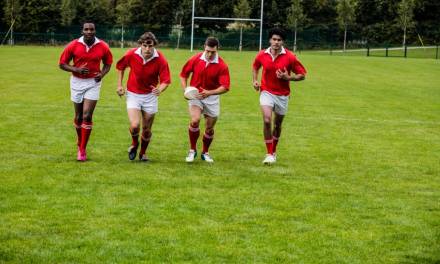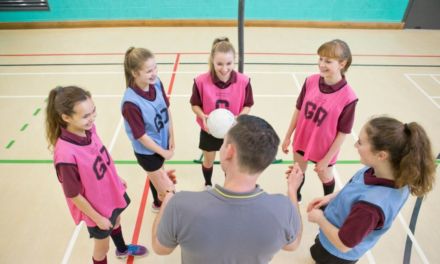Rugby League is perhaps one of the toughest sports around, with participants covering an estimated 9km during an 80-minute match. Being in the best possible shape for this physically enduring sport is imperative if you want to play well.
So how can you help your students achieve the required levels of fitness for rugby league? We have some tips below that will give them an advantage both on and off the pitch.
Train outdoors
This may sound like an obvious suggestion but training outdoors in all weathers can really help prepare and focus your players.
Getting teams used to the vagaries of the British weather means that when they are presented with different pitch and weather conditions, they can concentrate on the game in the knowledge that they have practised playing in similar conditions.
Incorporate outdoor training into your students’ routines to teach them to deal with the wet and cold during physical activity. This will help toughen them up by increasing their levels of endurance.
Cross-country runs are a great idea to get them started. If you have a local park where you can meet up a few times a week together, make the most of it.
Healthy eating
Improving fitness for rugby league isn’t just about endurance and strength training. Whilst every school rugby team member isn’t expected to be performing at the same level as a professional athlete, eating well is key to keeping your body ready to run distances, maintain stamina and endure brutal hits on the field.
We all know what healthy foods are by now, so this pointer is more about avoiding excessive junk food before a rugby match. Maybe even have the team eat together frequently to bolster team spirit and foster a good diet.
Encourage your students to see a eating healthily as a lifelong goal – recommend recipes that include lean meats (preferably chicken), oily fish, complex carbohydrates (starchy vegetables and whole grains), fruit and, of course, plenty of water.
Introduce different training methods
It’s imperative that your students know that a varied workout routine is essential for rugby league players. Using the same training programme will not be beneficial for achieving overall fitness. The variety of exercises will also help them remain interested and motivated as they train.
Coach them on how to practice different methods such as plyometrics, cryotherapy and kettlebells. Hot yoga is also recommended for rugby league players to improve flexibility.
Try and adopt a new programme for them every 8 weeks to keep things fresh and keep them challenged.
Why not develop a fitness program for the team as a whole and then concentrate on individual plans with the team members to get them to reach their own personal potential?
Encourage them to step outside their comfort zone
Players need a high level of fitness for rugby league and regular workout methods are sometimes not sufficient. Your players will need to be challenged constantly, both mentally and physically, to prepare them for the playing season.
Incorporate tougher fitness challenges and boot camp style training routines to build their resilience and prepare them for competitive matches.
Introduce the ‘one more’ mentality. Exhausted after a session of circuit training? Get them to do ‘one more’ circuit or element. Gasping for oxygen after a training run? Go further and see who can add ‘one more’ lap after they have finished the initial course.
Be careful though – exhaustion and injuries are close companions so make sure that encouraging them to push themselves isn’t to the detriment of their physical wellbeing.
Work out as a team
To incentivise them to work out harder, appeal to their competitive spirit by working out as a group. Holding training sessions with teammates and friends is a fun way to motivate your students to improve their levels of fitness for rugby league.
If you really want them to take it seriously, incorporate a competitive element with challenges and scoreboards.
Focus on cardiovascular fitness for rugby league
Rugby players are constantly on the move so make sure your students are prepared by encouraging them to run as much as possible.
Sprinting and hill running are two great ways to help build up their cardiovascular fitness for the pitch. Make sure that your students learn as much about sprinting technique as much as speed.
There’s no reason why you can’t include different fitness techniques into your training and as the player’s mind is focused on the skill being taught, their body is also feeling the benefit.










